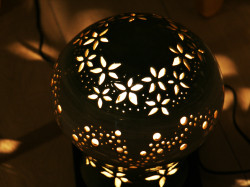
October 7, 2010
Women’s Volleyball World Championship
Get ready for spike-happy gals in Tokyo
By Metropolis
Originally published on metropolis.co.jp on October 2010

When the FIVB Women’s World Volleyball Championship gets underway October 29, you’ll have the opportunity to see statuesque sportswomen pounding balls with supreme athleticism. With the net placed at 2.24 meters above the court, height is obviously an advantage—some of the players themselves stand over 2 meters tall.
Yoshie Takeshita (right), Japan’s star, is 159cm. Yuko Sano, the team’s libero, is also 159cm. So, how do they compete? More to the point, do they compete?
The answer to the second question is, unequivocally, yes. As in yes. Takeshita and Sano may be the two shortest players at the World Championship, but they are also likely to be among the best—as in best in the world.
It’s hard to find any reason for not calling Takeshita Japan’s greatest female athlete. And possibly even “greatest athlete” of any gender. She was named MVP and Best Setter at the last World Championship, in 2006, and even though she’s not captain of the Japan women’s volleyball team—another fighter, Erika Araki, has that honor—she controls everything on the court.
In many ways, that’s natural for volleyball setters; their role is to prepare the attacks and deliver pinpoint balls for the spikers. But just having the job doesn’t make you a star. You have to be driven from within, you have to lead by example, and you have to keep giving no matter how much the odds are stacked against you. Takeshita is a leader like no other in Japanese sport.
The 32-year-old could be forgiven for keeping her feet on the ground while 2-meter-tall Amazons spike balls into her face. But Takeshita has the right stuff—in the recent World Grand Prix, she came up with three magnificent blocks. Japan coach Masayoshi Manabe said Takeshita’s ability to block against the giants of the game was “normal,” but the smile on his face said a lot more—that is, what’s “normal” for Takeshita would be extraordinary for anyone else. He knows he has a rare talent on his team.
And she’d be even rarer if it wasn’t for Sano, eight months younger than her sempai but equal in height and application. Sano is a libero, a mainly defensive player whose main task is to handle other teams’ spikes and serves as they plummet courtwards. Reactions are vital, and Sano has the reactions of a fly and the protective determination of a mother lion. Japan also has terrific offensive players: Araki, Saori Kimura (the team pinup), Yukiko Ebata and new-girl-on-the-block Saori Sakoda.
Of course, they’ll need to come up big to be competitive against the game’s powerhouses, which include Poland, Brazil, Italy, the Netherlands, the US, Cuba, China and defending champions Russia—24 teams in all. For the first round October 29 through November 3, the squads will be split into four pools playing in Tokyo, Hamamatsu, Matsumoto and Osaka. They’ll be pared down to 16 teams for the two-pool second round (November 6-10 in Tokyo and Nagoya), with the final two rounds (November 13 and 14) taking place in Tokyo.
Japan may not be the favorites in the competition, but don’t be surprised to see them competing for the top prize. They hit above their weight—and, more importantly, above their height.
Women’s World Championship
First round. Oct 29-Nov 3, 12:30pm. ¥1,500-¥9,800. Yoyogi Gymnasium. Tel: 0570-084-029.







